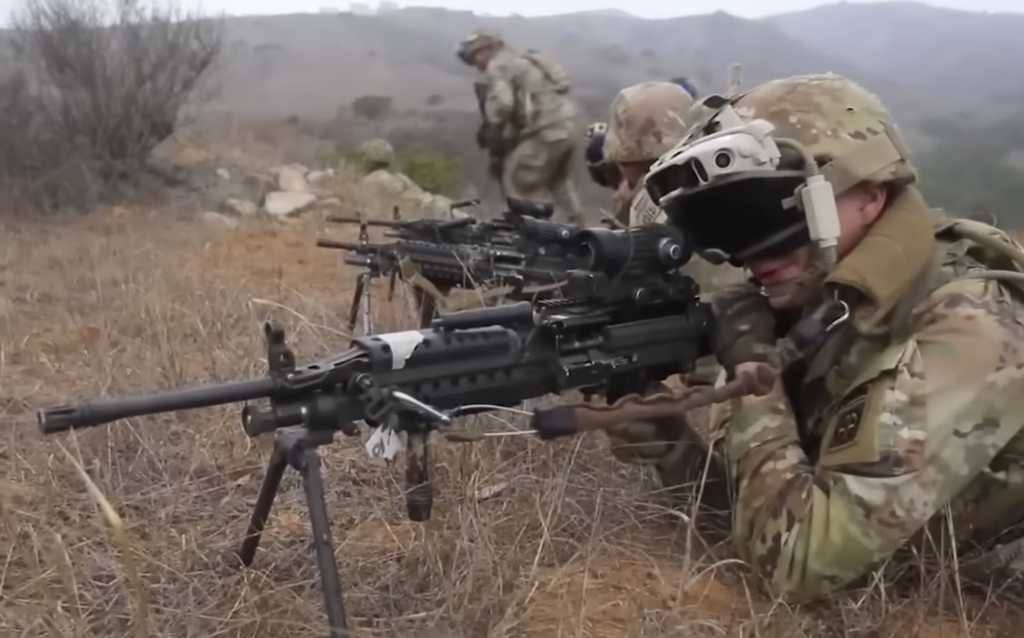
Technology has, slowly but surely, improved firearms. The oldest firearms weren’t very good at all, at least until European bellmakers improved on those early Chinese designs. Better powder, better bullets, better actions, modern cased ammunition, all lead to where we are today.
Now the digital world is becoming a big part of the shooting world, with holographic sights, dry fire training systems, VR simulations, and more. Guns are now being built at home with 3D printing and that will only increase as the processes become cheaper and easier.
You can bet that militaries will take advantage of all of this technology, even if they’re years behind the most cutting edge experimental and competition shooting technology. But, it isn’t always easy to integrate advanced technology into the modern battlefield.
One of the biggest changes happening right now is the road to adoption of the XM7, with its three-piece case ammunition that can endure extreme pressures and give U.S. troops a range advantage over likely adversaries. But the gun itself is just a rifle that shoots pissin’ hot ammo without the high-end optic the military’s going to not only install on it, but on AR-pattern rifles firing 5.56, too.
The XM157 Next Generation Fire Control System aims to bring computing power not only to the individual shooter, giving them point and shoot capability far beyond point-blank ranges, but also aims to make the rifle part of a computer network.
Using the optic, the shooter will be able to send and receive the positions of targets and other points of interest with everyone from the shooter over the next hill to a general watching and guiding the battle from the Pentagon. The system will also offer other capabilities that the military isn’t ready to reveal to the public yet, all via networking, sensors, and a global computer network.
As any shooter — military or civilian — knows, though, you can’t watch the world through your optic 24/7. In the civilian world, that constitutes serial aggravated assault in many states. In the military world, pointing a rifle downrange at the wrong time might get rifles pointed back that you could have avoided.
So the military wanted to bring all of these capabilities and more to a soldier’s face, with or without the rifle. Between the IVAS system and the XM157, military personnel could gain the ability to see through some walls (by seeing others’ sensor data), shoot around corners using the rifle’s camera, get wide-angle night and thermal vision, and have a video game-like view of battlefield information.
But, as Task & Purpose pointed out recently, things aren’t going nearly as smoothly for the helmet system as they’ve gone for the XM7 and XM157.
While the overall idea is promising, the joint project with Microsoft isn’t making life good for soldiers who have tested it. The biggest problem? A lack of minimum standards for user satisfaction. Things like dizziness, disorientation, and nausea have made the tacticool version of the Apple Vision Pro a net liability for those who have tested it so far.
At worst, one soldier said, “The device would have gotten us killed” as the backlighting for the see-through augmented reality display makes a soldier visible for hundreds of meters, not unlike a Vietcong soldier smoking a cigarette.
Newer versions of the headset are being distributed for combat testing now while older versions (that light-you-up-for-getting-shot model) will only be used for training. But we don’t know what improvements have been made to the newer versions. The OIG report mentioned in the video didn’t give a good picture of the program’s ability to make soldiers happy with it.
Improvements have been made in terms of weight, the ability to flip the goggle up and get it out of your way like night vision goggles, and more. Nobody, however, has said that the headaches, dizziness, and nausea have been addressed. As any VR users knows, extended use of such systems can make you feel terrible in a variety of ways.
What makes this question of improvement so important is that the funding for this system could be going to other things like improved traditional night vision gear. If the IVAS system is actually improved, it’s good money to spend. But if it’s a nauseating device that’s outperformed by ENVG-B, we’re not improving combat effectiveness. So Congress is trying to get them to spend less money at Microsoft and more on night vision.
If Microsoft doesn’t get it right soon, Congress and the Army may have to move on to something else.

2 Responses
DoD is very fond of fielding “Not ready for primetime” systems. Once the money is sunk into the project, and because careers are can be at risk, there is the stiffest of determination to not cancel a White Elephant (F-35 comes to mind).
The folks actually flying the Lightning II seem highly pleased with the result.
Complex weapon systems take time to mature…